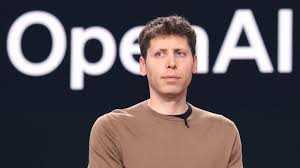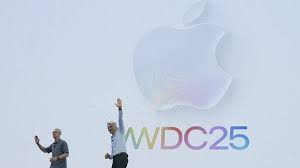Opening the Gates: OpenAI's Multi-Agent Demo and the Complex Calculus of an Open-Source Future
Editor
Jun 21, 2025
min read
6 views

In a strategic move that has captivated the artificial intelligence community, OpenAI recently released a fully open-source multi-agent customer service demo. This release, showcasing how multiple AI agents can coordinate in real-time to perform complex tasks, represents a significant, if nuanced, step towards greater openness from a company that has become increasingly proprietary over the years. The move has been interpreted in various ways: as a genuine effort to engage with the open-source community, a strategic maneuver to counter the rise of powerful open-source alternatives, and a calculated bet on where the future of AI development is headed.
The demo itself is a compelling showcase of OpenAI's 'Agents SDK'. It illustrates a scenario where different AI agents, each with a specialized function, work together to resolve a customer issue. One agent might handle initial communication, another could access a knowledge base to find relevant information, while a third could process a return or an order change. The system includes features like real-time tracing to monitor the agents' interactions and 'guardrails' to ensure they operate within predefined safety and operational parameters. By open-sourcing this entire framework, OpenAI is providing developers with a powerful toolkit to build their own multi-agent systems, a domain that is widely considered to be the next frontier in AI application development.
This embrace of open-source, however, comes with a complex backstory. OpenAI's very name is a nod to its founding principles of openness and broad distribution of AI's benefits. However, as the company transitioned to its 'capped-profit' model and its technology became increasingly powerful and valuable, it moved away from open-sourcing its core large language models, citing safety concerns and the competitive landscape. This has been a point of contention for many in the AI community, who believe that open collaboration and transparency are essential for responsible AI development.
In recent years, the open-source AI movement has gained significant momentum. Companies like Meta have released powerful models like Llama, and a vibrant ecosystem of developers and researchers has sprung up around open-source AI, creating a formidable challenge to the closed, proprietary approach of companies like OpenAI. By releasing the multi-agent demo, OpenAI may be seeking to co-opt some of this open-source energy, encouraging developers to build on its platform rather than on those of its competitors. It's a way of saying, 'While our most powerful models remain proprietary, we can still provide you with the open tools to build innovative applications on top of them.'
There are also sound strategic reasons for this move. The development of sophisticated, multi-agent systems is a complex endeavor. By open-sourcing its Agents SDK, OpenAI can crowdsource innovation, benefiting from the collective ingenuity of the global developer community. This can accelerate the discovery of new use cases, the identification of bugs and vulnerabilities, and the development of best practices for building and deploying agent-based systems. It also fosters a community of developers who are skilled in using OpenAI's tools, creating a valuable ecosystem around its platform.
However, the release is not without its potential pitfalls. Open-sourcing powerful AI tools, even if not the core models themselves, can lower the barrier to entry for malicious actors. While OpenAI has built in 'guardrails,' determined adversaries could potentially modify the open-source code to bypass these safety features, creating AI agents for nefarious purposes such as spreading disinformation, conducting sophisticated phishing attacks, or coordinating cyberattacks. OpenAI will need to remain vigilant and work closely with the community to address such security risks as they emerge.
The timing of this release is also significant, coming at a time when OpenAI's relationship with some of its key partners is in flux. Recent reports have indicated that OpenAI is cutting ties with Scale AI, a major data labeling partner, partly due to Meta's growing influence over the company. This suggests a broader strategic realignment within the AI industry, where companies are becoming more vertically integrated and are carefully managing their dependencies on external partners. By fostering its own open-source ecosystem, OpenAI can reduce its reliance on third-party data and tooling providers.
Ultimately, OpenAI's open-source gambit is a reflection of the evolving dynamics of the AI industry. The future is likely to be a hybrid one, with a mix of powerful, proprietary models and a vibrant ecosystem of open-source tools and applications. OpenAI's multi-agent demo is a strategic positioning within this hybrid future, an attempt to bridge the gap between its commercial interests and its founding ideals. It is an invitation to the open-source community to build with OpenAI, a move that could either be a genuine step towards a more collaborative future or a savvy business decision designed to maintain its dominance in the age of AI agents. The response from the community, and the innovations that emerge from this open-sourcing, will determine its ultimate impact.
Editor
League Manager Editorial Team





Leave a Comment